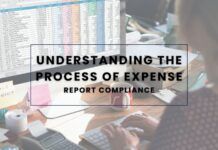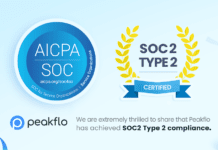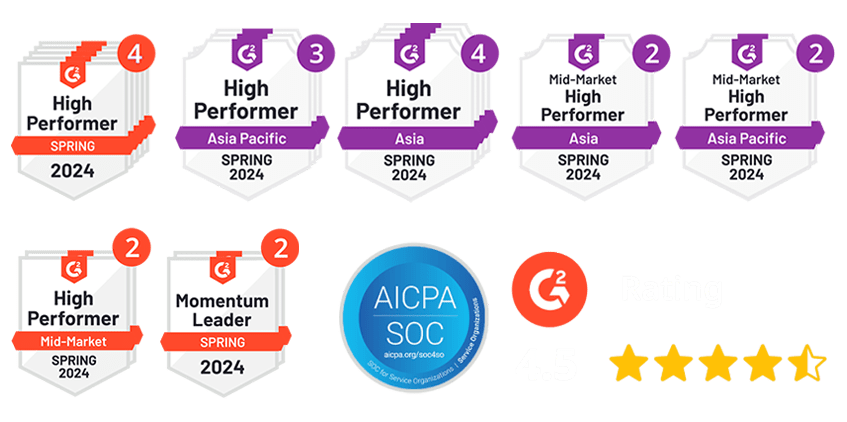Do you track miles for work-related travel? If so, you need to know the travel reimbursement rate for 2025 to ensure accurate compensation.
In the US, businesses reimburse employees for work-related mileage to cover fuel, maintenance, and wear and tear. The IRS sets the standard mileage expense rate each year based on economic factors like fuel costs and inflation. In 2024, the business mileage rate was 67 cents per mile, similarly impacting businesses and self-employed individuals.
Staying updated on mileage rates is essential for tracking tax deductions and expenses. If you overpay, you lose money. If you underpay, you risk compliance issues.
This guide explains the 2025 standard mileage rate, IRS rules, tax implications, reimbursement calculations, and how to manage mileage policies efficiently.
What Is Mileage Reimbursement?
Mileage reimbursement is the compensation businesses provide to employees for using personal vehicles for work-related travel. It helps cover mileage expenses like fuel, maintenance, and depreciation. The IRS sets the travel reimbursement rate for 2025 to standardize these payments and ensure fair compensation.
This reimbursement is common for sales teams, field employees, and self-employed individuals who claim business travel deductions. Employers can use the IRS mileage rate or set their policies, provided they meet tax compliance rules.
Not all miles driven qualify for reimbursement. Understanding what counts as business mileage is essential for accurate claims.
What Is Considered as Business Mileage?
Not every mile driven qualifies for reimbursement. The IRS defines business mileage as miles driven for work-related purposes, excluding personal commutes.
What’s considered for Reimbursement:
✔ Traveling between job sites or client meetings
✔ Driving to conferences, training, or off-site work events
✔ Trips to purchase business supplies
✔ Self-employed or independent contractors traveling from a home office to another work location for the same business
What’s not considered for Reimbursement:
✖ Daily commute from home to the office (unless your home is your primary office)
✖ Personal errands or non-work-related trips
✖ Travel unrelated to job duties
Businesses must follow the IRS travel reimbursement rate to avoid tax issues. Proper record-keeping ensures compliance with 2025 travel reimbursement rates and prevents errors.
But does mileage reimbursement count as taxable income? Understanding tax rules is just as important as tracking mileage expenses.
Is Mileage Reimbursement Taxable?
Mileage reimbursement is not taxable if employers follow the IRS rate for travel reimbursement and use an accountable plan. Employees must track mileage and submit accurate records. If reimbursement exceeds the IRS rate, the extra amount is taxable income.
For self-employed individuals and independent contractors, mileage is a deductible business expense, not reimbursement. They must track and report mileage expenses on their tax returns using the IRS 2025 travel reimbursement rates.
Keeping proper records helps avoid tax issues and ensures accurate deductions. But how much is the IRS-approved mileage rate for 2025? Let’s find out.
What Is the Federal Mileage Reimbursement Rate for 2025?
The IRS has announced the travel reimbursement rate for 2025. Here are the mileage rates for the year 2025:
- For business use, the rate has increased by 3 cents from the previous year, now set at 70 cents per mile. This change reflects the rising costs of operating a vehicle.
- Rates for medical and moving purposes remain at 21 cents per mile.
- The charitable rate stays at 14 cents per mile.
These rates are determined annually based on a study of the fixed and variable costs of operating an automobile. Staying updated on these rates ensures accurate tracking of mileage expenses and compliance with IRS guidelines.
Understanding the 2025 travel reimbursement rates is important, but knowing the IRS rules governing mileage reimbursement is equally important.
What Are the IRS Mileage Reimbursement Rules?
Understanding the IRS mileage reimbursement rules is important for employers, employees, and self-employed individuals. These guidelines impact tax filings and business operations. The IRS sets clear standards for managing mileage expenses, with variations based on employment type.
For Employers
Employers must comply with IRS mileage reimbursement rules, even though federal laws do not mandate reimbursement for employees. However, some states, like California, Massachusetts, and Illinois, require employers to reimburse employees for business-related mileage expenses.
Failing to reimburse employees appropriately could result in legal consequences, especially if their net income falls below the federal minimum wage. Employers can choose from several methods to reimburse their employees for mileage expenses:
- IRS Standard Mileage Rate
This method involves reimbursing employees based on the IRS travel reimbursement rate for 2025. It is straightforward and widely used because it simplifies calculation and record-keeping.
If employers use the IRS standard rate, the reimbursement amount remains tax-free for employees, provided the employer follows proper procedures and the employee submits accurate mileage records.
- Monthly Mileage Allowance Method
The monthly mileage allowance method involves paying employees an advance for anticipated business mileage expenses. However, if actual mileage differs significantly from the estimate, the allowance may need to be adjusted.
- Fixed And Variable Rate (FAVR) Method
The FAVR method reimburses employees for fixed and variable costs related to using their vehicle for business purposes. Fixed costs (such as insurance, depreciation, and lease payments) are reimbursed at a fixed rate, while variable costs (like fuel, oil, and maintenance) are reimbursed based on a cents-per-mile rate.
For Employees
Employees who use their vehicles for business purposes are typically eligible for mileage reimbursement from their employer. However, unless state laws mandate reimbursement, employers are not federally required to provide it.
Employees are responsible for maintaining accurate records of their business mileage, including dates, miles traveled, locations, and purpose of travel. The IRS requires employers to reimburse only up to the IRS-approved rate.
Employees should track their mileage carefully and check with their employer to ensure the correct details are included in their reports. Accurate records will help avoid discrepancies and ensure that employees are not taxed for mileage reimbursements that are within the IRS limits.
For Self-Employed Individuals
Self-employed individuals, including independent contractors and freelancers, face different rules for mileage deductions. Instead of receiving reimbursement from an employer, self-employed workers are entitled to deduct their business mileage expenses when filing their taxes.
To qualify for the deduction, the vehicle must be used for business purposes. If the vehicle is used for personal and business purposes, only the business-related mileage can be deducted. There are two methods self-employed individuals can use to calculate their mileage deduction:
- Standard Mileage Rate Method
With the standard mileage rate method, self-employed individuals can use the IRS-approved rate for business miles driven. For 2025, this rate is 70 cents per mile.
- Actual Expense Method
The actual expense method allows self-employed individuals to deduct the actual costs incurred for using their vehicle for business purposes. These costs include fuel, maintenance, repairs, insurance, registration fees, depreciation, and other related expenses.
This method requires detailed record-keeping and can be more complex than using the standard mileage rate. However, it may result in a larger deduction if the vehicle’s actual expenses are high.
Proper adherence to IRS mileage reimbursement rules can help avoid costly errors during tax season. The 2025 travel reimbursement rates ensure compliance and reduce the risk of tax penalties.
But what kind of records should you maintain to track mileage accurately? Let’s find out in the next section.
What Records Do You Need for Mileage Reimbursement?
To ensure you get reimbursed accurately, the IRS requires specific records for mileage expenses. You should maintain the following details for each business trip:
- Date of travel
- Destination of your journey
- Purpose of travel
- Odometer readings (starting and stopping mileage and miles traveled)
- Type of expenses incurred
- Expense amount paid
These records help prove your eligibility for the travel reimbursement rate 2025. Without proper documentation, it’s difficult to claim reimbursement. Now, let’s look at how to calculate your mileage reimbursement effectively.
How Do You Calculate Your Mileage Reimbursement?
There are two methods to calculate mileage reimbursement. These include:
- Standard Mileage Rate
You can simply multiply the miles driven by the travel reimbursement rate in 2025. For example, if you drove 100 miles at 70 cents per mile, the reimbursement would be $70.
- Actual Expense Method
At this point, you might need a calculator. Let’s understand it with an example.
Let’s assume you spend around $500 monthly on fuel, maintenance, insurance, depreciation, etc.
- Total miles driven: 300 miles
- Total business miles driven: 120 miles
- Business use percentage: (120/300) * 100 = 40%
Now, calculate the mileage deduction:
- Total actual expenses: $500
- Deduction based on business use: $500 * 40% = $200
Following the actual expenses method, you can deduct $200 as your mileage tax deduction for the month.
This method requires careful tracking, but it can yield a larger deduction compared to the standard rate.
Now that you know how to calculate mileage reimbursement, let’s learn how to manage a mileage expense policy effectively.
How to Manage a Mileage Reimbursement Policy?
It’s essential to have a clear and efficient policy to ensure smooth management of mileage reimbursements. Here are five steps to help you manage it effectively:
- Communicate the Policy Clearly: Inform employees about the travel reimbursement rate 2025, rules, and the process for submitting mileage expenses.
- Track All Mileage: Require employees to record the date, miles driven, and purpose of each trip, along with the starting and ending odometer readings.
- Automate the Process: Use tools like Peakflo to track mileage automatically and reduce errors or delays.
- Ensure Accurate Documentation: Ask employees to submit detailed records for each business-related trip, including receipts for any additional expenses.
- Review and Update Regularly: Update the mileage expense rate annually to align with the travel reimbursement rate 2025 and any policy changes.
Implementing these steps ensures consistency and accuracy in your reimbursement process. Now, let’s discuss how Peakflo can help you track and manage mileage reimbursements more efficiently.
Why Use Peakflo to Track and Manage Mileage Reimbursements?
Peakflo is an automated accounts payable and accounts receivable (AP & AR) solution that helps businesses optimize financial operations. With its simple API and one-click ERP integrations, Peakflo streamlines invoice-to-cash and procure-to-pay processes.
Designed to remove manual inefficiencies, improve transparency, and ensure accurate financial workflows, Peakflo empowers finance teams to work smarter. Here’s how Peakflo can help businesses manage travel expenses:
- Configurable Policies: Set custom rules for mileage and travel expenses to ensure compliance with company guidelines. Easily adjust policies based on changing business needs.
- Dynamic Expense Category: Categorize expenses flexibly to match your business requirements, ensuring accurate tracking and reporting for each trip.
- Per Diem Rules: Define daily spending limits based on location, ensuring employees stay within budget while adhering to company travel policies.
- Manage Travel Requests: Simplify the creation and submission of travel requests, aligning them with company guidelines for approval and reimbursement.
- Expense Automation: Automatically submit and approve travel expenses, reducing manual tasks and speeding up the reimbursement process.
- Integrations with ERPs: Integrate seamlessly with popular ERP/accounting software, allowing for smooth data transfer and enhanced financial workflows.
- Real-Time Expense Monitoring: Track travel costs in real-time, gaining visibility into spending and ensuring compliance with budgetary limits.
- Customizable Approval Flows: Set up custom approval workflows to your company’s structure, speeding up the reimbursement process and ensuring adherence to policies.
- Policy Adherence: Automatically flag non-compliant expenses, ensuring all travel-related expenses meet company policies before reimbursement.
- Anomaly Detection: Detect unusual or duplicate expenses by setting alerts, reducing the risk of fraudulent or excessive claims.
Conclusion
Understanding mileage reimbursement is important for businesses to stay compliant and manage costs effectively. The 2025 travel reimbursement rate is 70 cents per mile for business use, 21 cents for medical and moving purposes, and 14 cents for charitable purposes.
Knowing what qualifies as business mileage, understanding tax implications, and keeping proper records are key components for both employers and employees.
Employers should create clear policies, while employees must track their travel carefully. For self-employed individuals, both the standard mileage and actual expense methods offer tax-saving opportunities. Efficient management ensures accurate reimbursements and financial transparency.
Are you ready to simplify mileage reimbursements?Book a demo to see how Peakflo streamlines mileage reimbursement tracking and improves financial workflows.









![Why AI Sales Calls Are Making Good Sales Reps Even Better [2025 Guide] ai sales calls](https://cdn-kmjmp.nitrocdn.com/YvtqmrsiHUxqerlSiZgbfzqqTARWTElr/assets/images/optimized/rev-a4aafe3/blog.peakflo.co/wp-content/uploads/2025/09/65168cf6-3001-4733-8cbc-12d5684cf449-218x150.webp)

































